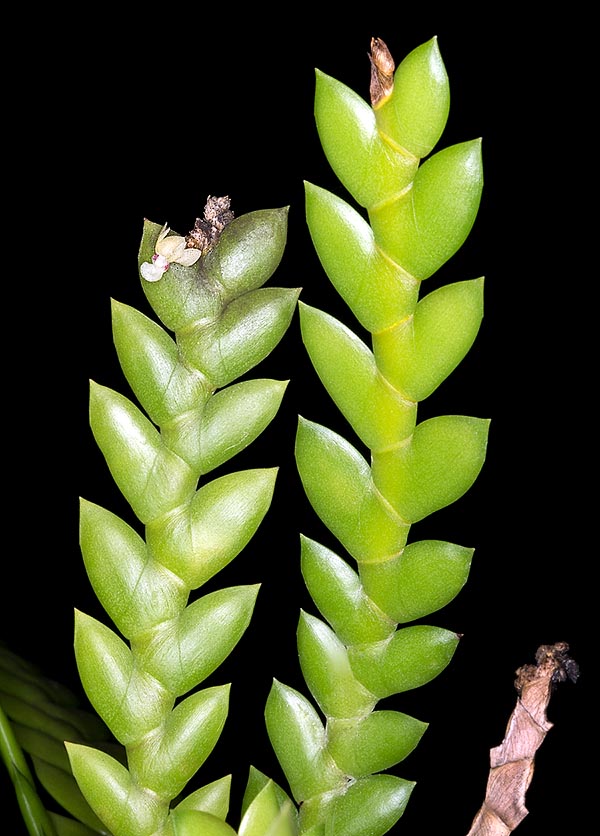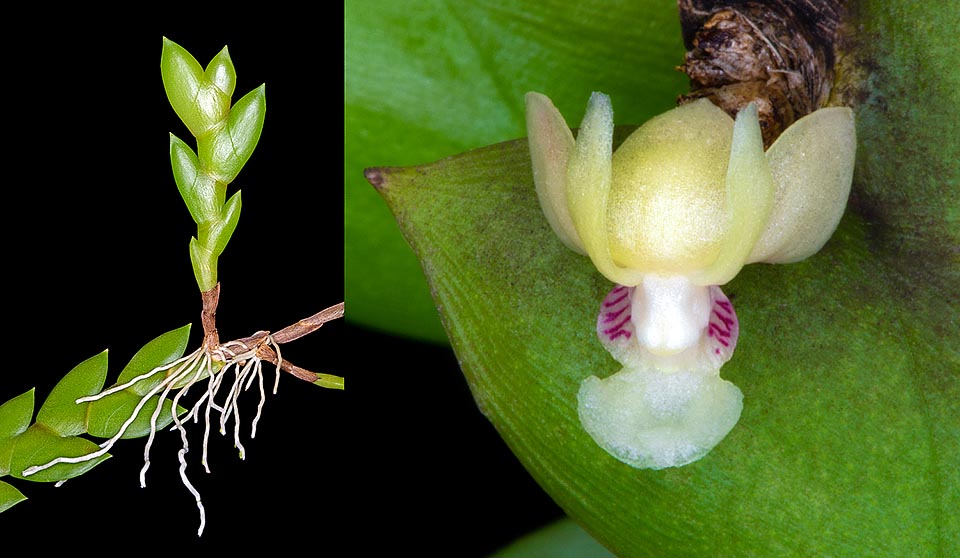Family : Orchidaceae

Text © Pietro Puccio

English translation by Mario Beltramini

Miniature orchid, rarely cultivated, the Dendrobium merrillii is an epiphyte of Philippines © Giuseppe Mazza
The name of the genus is the combination of the Greek substantives “δένδρον” (dendron) = tree and “βίος” (bios) = life, with reference to the numerous species of the genus living on the trees; the species is honoured to the American botanist Elmer D. Merrill (1876-1956), scholar of Philippines flora.
Common names: Merrill’s dendrobium (English).
The Dendrobium merrillii Ames (1908) is an epiphytic species with close stems, 12-18 cm long, compressed laterally, provided of alternate leaves, distichous, imbricate, equitant (at a single face with lamina folded in two along the central vein), lanceolate with acute apex, about 1,4 cm long and 0,7 cm broad, of intense green colour, fleshy.
Inflorescences from the apical nodes bearing flowers, of about 4 mm of diameter, of white colour with purple veins on the lateral lobes of the labellum; pedicel and ovary about 5 mm long.
Oblong dorsal sepal with obtuse apex, about 2 mm long and 1 mm broad, oblong-triangular lateral sepals with acute apex, about 2 mm long and 1,5 mm broad, petals about 2 mm long and 0,5 mm broad, trilobed labellum, about 4 mm long and 1,5 mm broad, and column about 1 mm long.
It reproduces by seed, in vitro, and by division, with each section provided of at least 3-4 pseudobulbs, and through the young plants at times generating at the nodes (in jargon “keiki”, that in Hawaiian means “sons”), that can be removed once they have formed a good rooting apparatus.
Miniature orchid, rare in cultivation, requires a semi-shady and aerated position, medium-high temperatures, 22-32 °C, and high humidity, 75-85%.
Frequent waterings during the vegetative period, more spaced in winter in order to grant a light period of rest, utilizing rain water, demineralized or by reverse osmosis.

Stems with imbricate leaves folded in two. Left, a “keiki”: the start of a new plant. Right, the tiny 4 mm flower © Giuseppe Mazza
Synonyms: Aporum merrillii (Ames) M.A.Clem. (2003).
→ For general notions about ORCHIDACEAE please click here.
